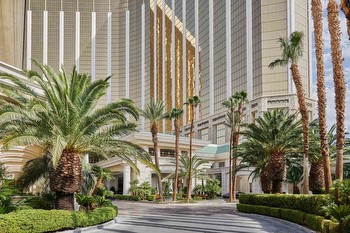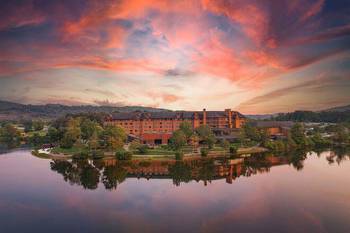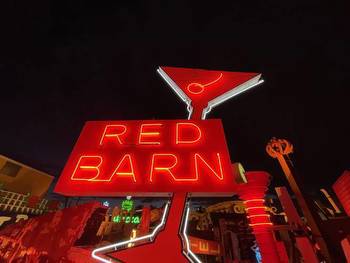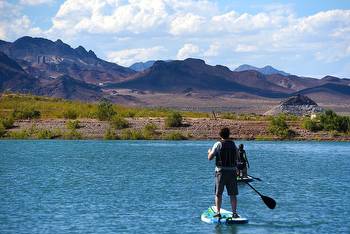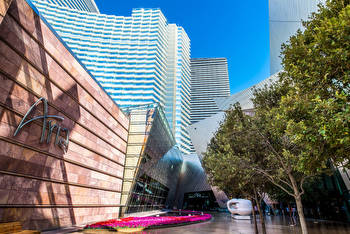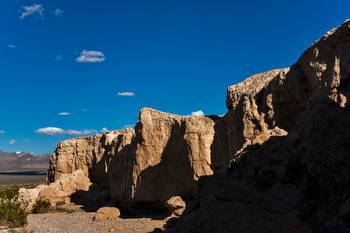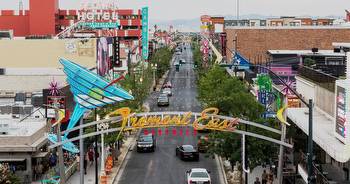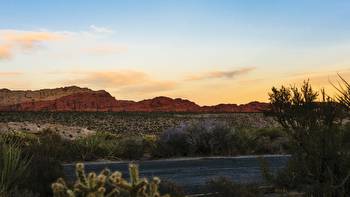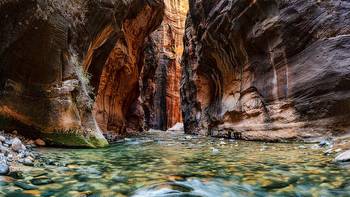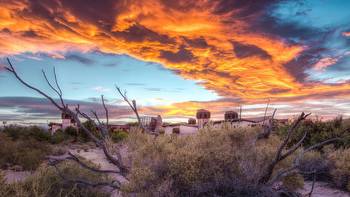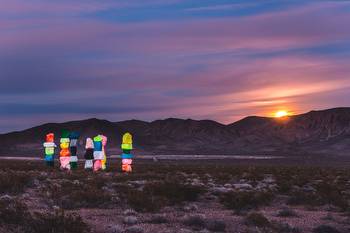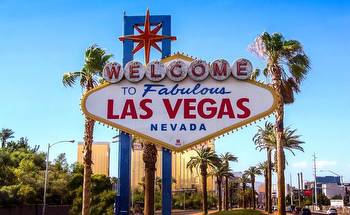These are the Best Places to Hike in Las Vegas

Spring is almost here, and Las Vegas has already begun to thaw. Though Vegas may be best known for sizzling summers spent poolside, there’s plenty more to discover beyond the Las Vegas Strip year-round. Now that the weather is feeling warmer — but before it gets too hot outside — here are some ideas for amazing hikes in and around Las Vegas.
Las Vegas in Spring: The Most Wonderful Time of the Year
You might already know about what Las Vegas has to offer indoors. If you’re not a heavy gambler or club regular, or even if you simply want to burn off those excess pounds from the fantastic meals you’re enjoying here, you can still find plenty to do in Southern Nevada’s great outdoors. Ever since publications like National Geographic and The Guardian began to praise the region’s ample hiking opportunities over a decade ago, outdoor enthusiasts have gradually come to realize that Vegas offers plenty of excitement beyond the poker rooms, the fight nights, and the buffets.
If you’re fortunate enough to visit Las Vegas during the springtime season (early March to early May), you’ll be blessed with mild weather, possible wildflower blooms, and the perfect excuse to escape the dark casino floor and experience the best hikes that Las Vegas has to offer.
The Best Hikes Just Outside Las Vegas
Sloan Canyon National Conservation Area
Situated at the edge of Henderson, the 48,438 acre Sloan Canyon National Conservation Area offers plenty of opportunities for outdoor exploring. You can choose from seven trailheads and a variety of hikes that offer everything from amazing views of the Las Vegas Strip below to stunningly serene and pristine high desert wilderness. The big highlight of this park is Petroglyph Canyon, where you’ll find over 300 rock art panels with some 17,000 design elements created by Native American tribal communities over the years. Some of these designs date all the way back to the Archaic era.
Please note that if you plan to visit Sloan Canyon’s Petroglyph Canyon, the Bureau of Land Management (BLM) allows no more than 20 people in the canyon at any one time in order to protect the wilderness and the petroglyphs. You can contact the BLM ahead of your visit in order to guarantee access to Petroglyph Canyon.
Tule Springs Fossil Beds National Monument
Tule Springs Fossil Beds National Monument, situated conveniently close to the CC-215 Beltway in North Las Vegas, offers 22,650 acres overflowing with ancient American history. The fossil beds feature historical treasures that date from 3,000 to over 200,000 years ago. Quarry workers found the first mammoth fossils in 1933, the Nevada State Museum hit the jackpot with plentiful Ice Age animal fossils (such as lions, camels, and bison) in their 1962 “Big Dig”, and scientists have since continued to discover more ancient history on these amazing lands. This area became a national monument in 2014, and animals like desert tortoises, golden eagles, kit foxes, and burrowing owls continue to call this land home.
Because this is still a fairly new park, the Aliante Loop Temporary Trail is the main route to get around the navigable areas. If you’re lucky enough to spot any Pleistocene fossils during your hike, please leave them undisturbed. You may get extra lucky if you arrive in time to witness the seasonal wildflower blooms.
Red Rock Canyon National Conservation Area
No list of Las Vegas’ best hikes is complete without mentioning the world-famous Red Rock Canyon, which is located west of Las Vegas’ suburban community of Summerlin. The 197,349-acre crown jewel of Southern Nevada’s protected public lands has something for nearly everyone: a 13-mile scenic road to drive or bike through the park, 31 hiking trails that range from easy to strenuous, ecosystems that span from Joshua trees and Mojave yuccas in the valley floor to ponderosa pine forests and mountain streams in the higher elevations, and multiple opportunities to experience 180 million-year-old Aztec Sandstone cliffs. These sandstone cliffs that give Red Rock Canyon its name are where you might find animal tracks that paleontologists have traced back to dinosaurs and Ice Age mammals.
If you want a little bit of everything, try the Pine Creek Canyon trail for a fairly easy hike featuring views of the red rocks, a ponderosa pine forest, remains of historic homesteads, and the refreshing waters of Pine Creek. If you’re up for a tougher challenge, Ice Box Canyon and the Calico Tanks provide quite the scenic adrenaline rush.
The Best Hikes Worth a Longer Drive
Mount Charleston
If you’ve ever visited Las Vegas during the cooler months and noticed a snow-capped peak in the distance, that’s Mount Charleston. Nestled in the 316,000 acre Spring Mountains National Recreation Area about 45 miles west of the Las Vegas Strip, Mount Charleston offers ample opportunities for scenic drives and beautiful hikes in an alpine climate that feels like such a stark contrast from the Mojave Desert below.
For an easier stroll, try the Sawmill Trail, which offers stunning mountain views alongside pinions, junipers, and wildflowers. For more of a challenge, Mary Jane Falls offers stunning switchbacks through groves of quaking aspens, white firs, and ponderosa pines, and the Pack Rat Route offers a surprising bit of Cold War history along with exhilarating changes of elevation. If you want to extend your mountain getaway, check the Mount Charleston Lodge for available cabins.
Gold Butte National Monument
Gold Butte may have become a national monument in 2016, but it offers nearly 300,000 acres full of historic charm: red sandstone formations that nature chiseled over millennia, Native American petroglyphs that date as far back as 12,000 years ago, and a former mining town that was founded in 1908. Situated about 113 miles northeast of the Las Vegas Strip, it’s a bit of a trek to reach Gold Butte, particularly once the paved road gives way to a dirt path. But once you make it, you will be rewarded with seemingly endless opportunities for exploring.
For a relatively easy hike near the designated campgrounds, enjoy the gorgeous scenery of Whitney Pocket, where you’ll find sandstone formations that emerge above the desert floor. For a wilder and truly jaw-dropping experience, head out to Little Finland and discover a red rock desert landscape that truly feels otherworldly. If you ever need some more familiar creature comforts – including hotels and restaurants — Mesquite is within reach.
The Best Urban Hikes in Las Vegas
Springs Preserve
For those who need some natural escape without the long commute, Springs Preserve might have the ideal solution. Springs Preserve offers three and a half miles worth of trails where you can find a desert tortoise habitat, bird watching opportunities, rare native plants, and a fascinating trip into Las Vegas’ storied past. Beyond the trails, you can also check out the seasonal butterfly habitat, the Las Vegas branch of the Nevada State Museum, the unique Origen Museum, and the botanical garden. General admission is $9.95 for adults and $4.95 for children ages three to seventeen.
Sunset Park
If you need a convenient escape to nature, you probably won’t find anywhere more convenient than this. Located almost literally on the other side of Harry Reid International Airport, Sunset Park is a favorite recreational spot for locals who live nearby. This regional park offers five trails, a fishing pond, native Mojave Desert gardens, and an extensive sports complex. At Sunset Park you can easily lose yourself exploring the verdant grounds, then look up and notice the dazzling lights of the Strip nearby.











